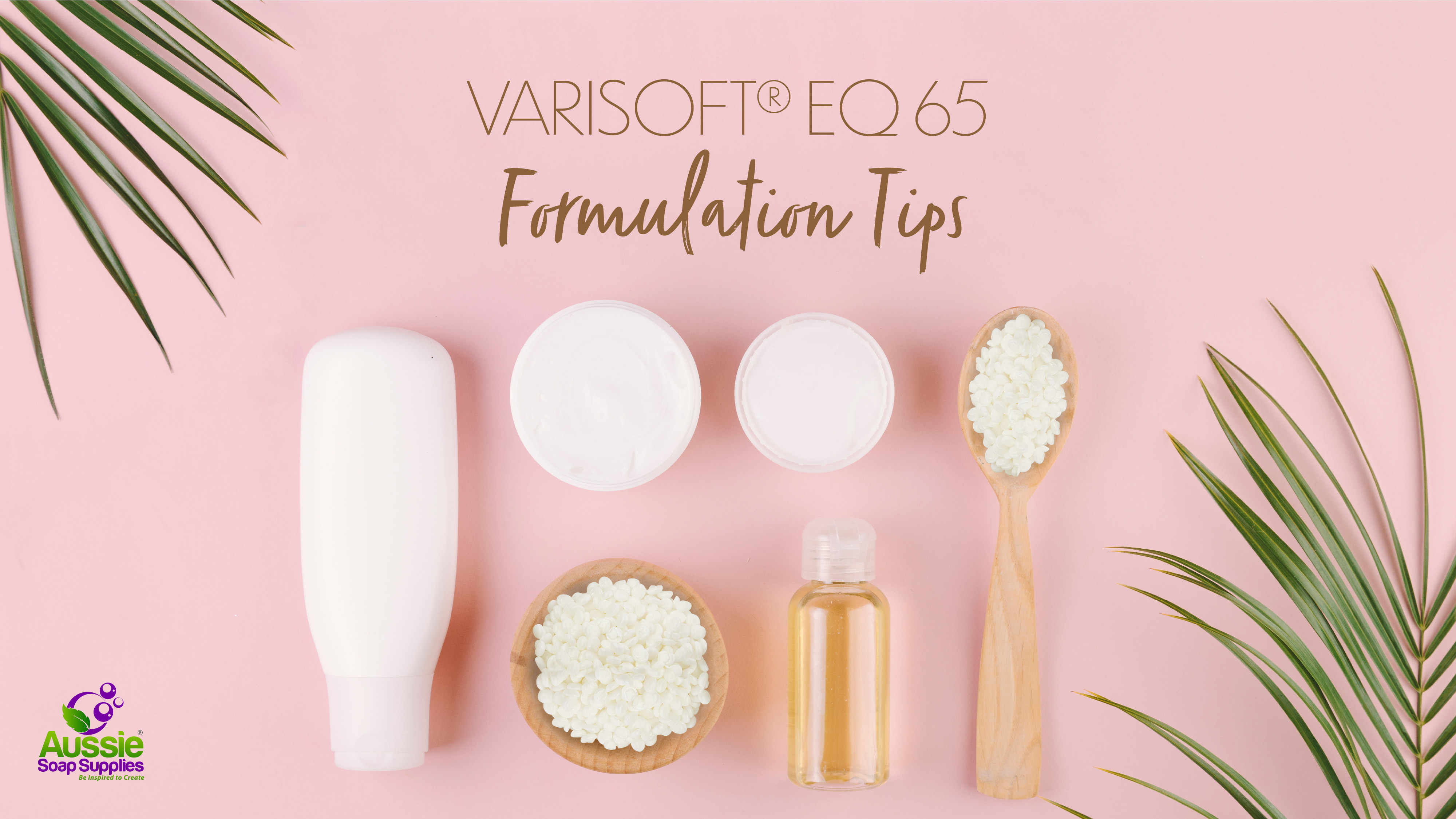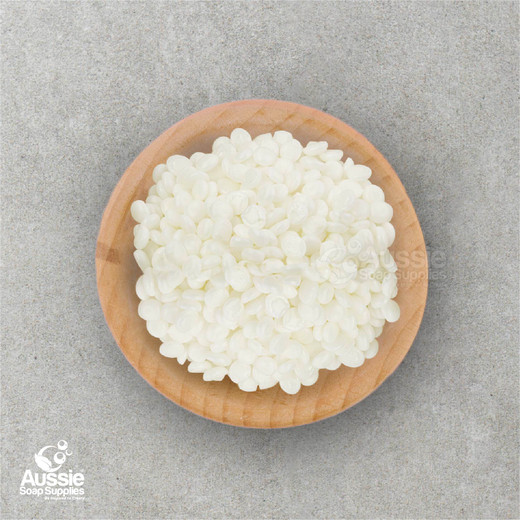
Hair care products made with 2% Varisoft EQ 65 offer excellent rinse-ability, increased ease of styling, and increased gloss when compared to 2% Behentrimonium Chloride. Additionally, these products exhibit increased hair volume, bounce, dry and wet feel along with dry and wet combing compared to 2% Cetrimonium Chloride.
- To avoid hydrolyzation (formula may break down) adjust pH to 4 to 4.5 with a 50% citric acid solution at the end of processing.
- Heat Varisoft® EQ 65 in the oil phase of your formulas. If you use a double boiler method you may need to add some extra heat at the end to ensure the pastilles are fully melted. This is not a problem in the microwave.
- Refer to the Technical Data Sheet to disperse in water at approximately 75°C. Addition of nonionic emulsifiers such as Ceteareth-25 improves the processability of VARISOFT® EQ 65 in water.
- Varisoft EQ 65 contains cetearyl alcohol as a thickener (35%) and 65% active distearoylethyl dimonium chloride, but the addition of fatty alcohols such as Cetyl or Behenyl Alcohol can increase substantivity and conditioning as well as viscosity. Generally, add 0.5% fatty alcohol for every 1% Varisoft EQ 65
- You will achieve optimal viscosity by mixing the product at 30°C or under for 30 seconds to 1 minute.
- The addition of non-ionic emulsifiers such as Ceteareth 20 or Olivem800 improves the processability in water.
- Preservatives and Fragrance or Essential Oils and other cool down ingredients can be added at 40°C with mixing, then allow the product to cool to room temperature.
- Once at room temperature, mix for 30 seconds to one minute to obtain maximum viscosity.
- In emulsions and conditioners with a small oil phase, Varisoft EQ 65 can be measured into the water phase and heated to 85°C along with any other heat tolerant oil or water soluble ingredients or dispersed into the water at 80 - 85°C. (This is the ‘one pot method’ that we use with BTMS.)
- In emulsions and conditioners with a larger oil phase, Varisoft EQ 65 and other oil or silicone soluble ingredients may be heated at up to 85°C while heating the water phase to a similar temperature, before combining and mixing with high shear in a separate container, then combined with the water phase with high shear mixing.








